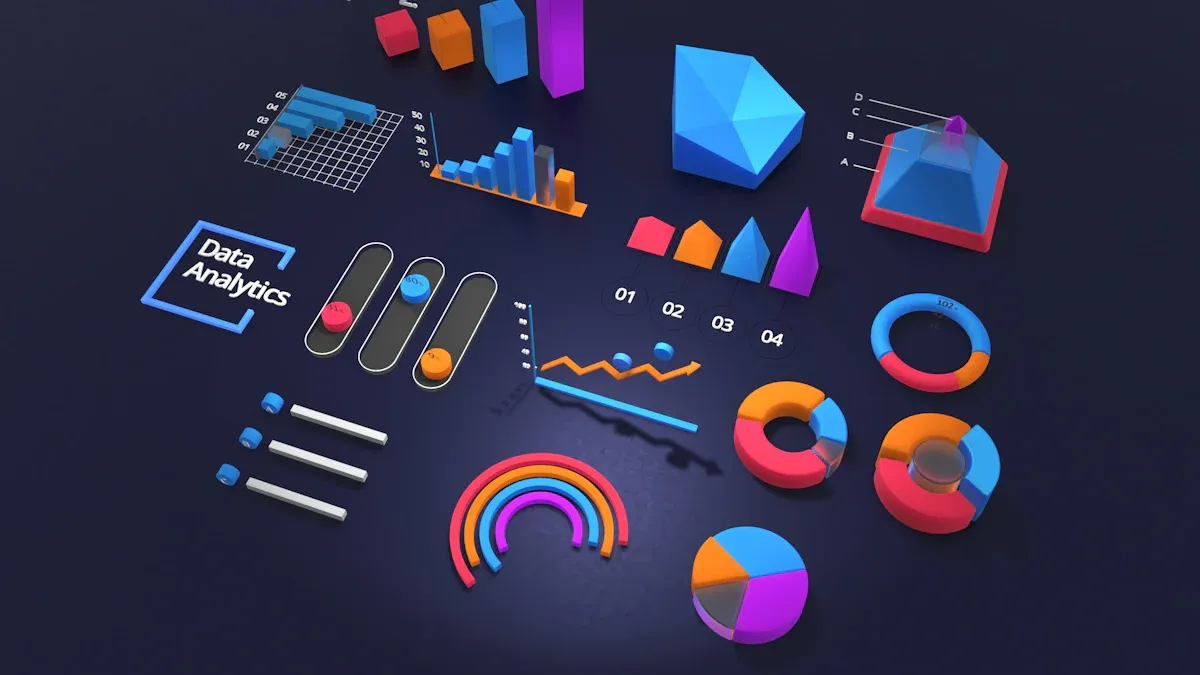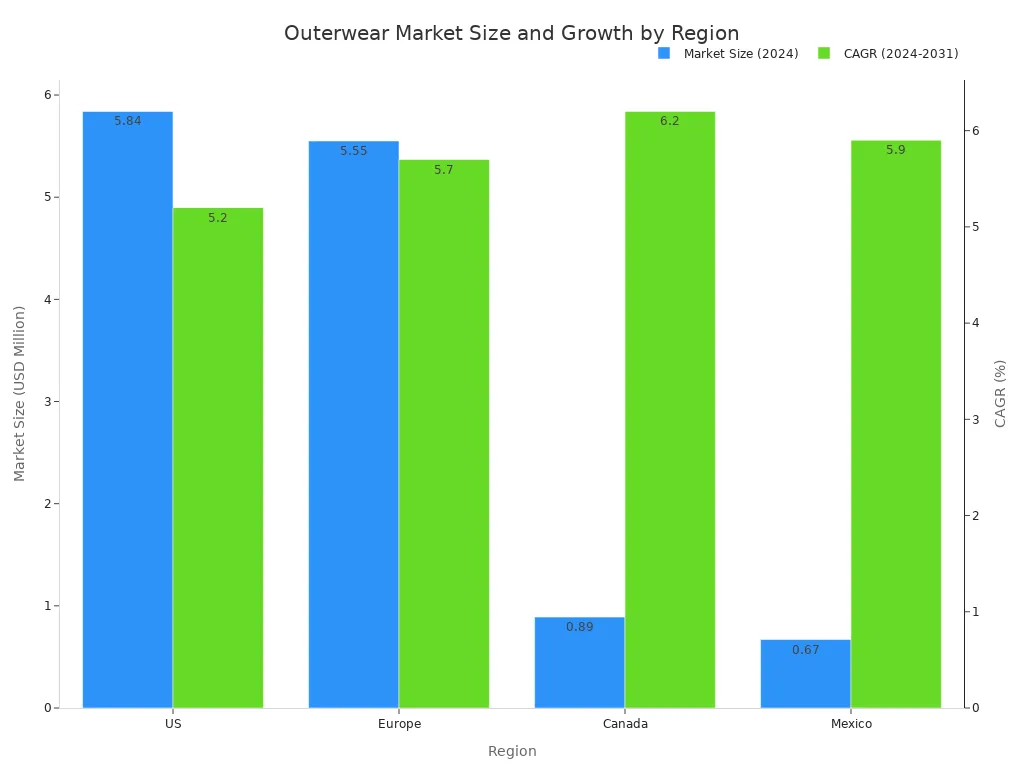
The most effective fashion forecasting strategies combine historical sales data with real-time, data-driven trend analysis. Inaccurate forecasting creates huge costs for the fashion retail sector, with poor purchasing leading to significant profit loss.
What if your brand could eliminate overstock and never miss a bestselling style?
| Loss Type | Estimated Annual Loss | Source |
|---|---|---|
| Inaccurate forecasting and overstock | $163 billion | Bloomberg Intelligence |
| Inaccurate stock purchasing across sizes | Up to 20% profit loss | N/A |
Relying on past performance alone is insufficient in today's fast-paced fashion market. A hybrid data model, using predictive analytics and insights from all data points, is the solution for creating accurate fashion forecasts and staying ahead of trends. This approach to trend forecasting helps retail brands thrive.
The Problem with Siloed Fashion Forecasting
Traditional fashion forecasting often operates in silos. Design, sales, and marketing teams work separately. This fragmented approach creates significant issues. It leads to inefficiencies, delayed decisions, and missed market opportunities. Brands cannot scale effectively when communication is broken. This old model is no longer viable in the fast-paced fashion industry.
Limits of Historical-Only Views
Many fashion brands rely heavily on past sales data for forecasting. This historical data offers valuable insights into past performance. However, it provides a limited view of the future. This approach cannot predict new trends or shifts in consumer behavior. It causes slow reactions to the changing market. Brands that only look backward often miss critical trend windows, leading to late market entries and reduced interest from the consumer. This makes it difficult to create accurate fashion forecasts.
Pitfalls of Chasing Disconnected Trends
Other brands chase disconnected trends without consulting their own data. They react to social media hype or runway shows. This strategy is risky. It often results in collections that fail to connect with their core customers. The outcome is predictable and costly.
This reactive trend forecasting fills inventory with items that require heavy markdowns, hurting profits for retail.
The Power of a Hybrid Data Approach
A hybrid data approach solves these problems. It combines a brand's historical sales data with forward-looking market analytics. This method provides a complete picture. It uses predictive analytics to identify which emerging trends will resonate with a specific customer base. Research shows this method can improve forecasting accuracy by up to 35% compared to older models. This data-based forecasting allows brands to make smarter buying decisions. It aligns product development with real-time demand, creating effective strategies that drive growth in fashion retail.
Start with Your Historical Sales Data

Accurate fashion forecasting begins with a brand's own historical data. This information provides the essential foundation for all future predictions. Analyzing past performance reveals what has already succeeded with a specific customer base. Brands use these foundational insights to build smarter, more profitable strategies. This data-driven approach moves beyond guesswork and grounds decisions in proven facts.
Identify Core Performers
The first step is to identify core performers from past sales. These are the top-selling products and categories that form the backbone of revenue. Effective analytics involves a clear process to find these key items.
- Gathering Data: Brands collect information from sales history, customer purchase patterns, and market research.
- Identifying Patterns: Analytics tools help visualize this data through sales charts and year-over-year comparisons to spot opportunities.
- Segmenting Products: Items are classified to tailor planning and forecasting.
This segmentation helps brands distinguish between evergreen and seasonal products.
- Evergreen inventory: These are core products that sell consistently all year, like basic t-shirts or classic denim styles.
- Seasonal inventory: These products have limited selling windows, such as holiday collections or summer-specific fashion.
Understanding this mix is crucial for stable revenue and accurate inventory management.
Analyze Customer Purchase Patterns
Successful brands analyze how customers shop, not just what they buy. This analysis of consumer behavior provides deep insights into purchasing habits. For fashion apparel, a typical purchase frequency is 2–4 times per year, often aligning with seasonal buying patterns. Understanding these patterns is key.
Higher purchase frequency leads to more predictable demand, which helps in several ways:
- Optimizing stock levels for fast-moving items.
- Reducing overstock of low-frequency products.
- Scheduling supplier orders more accurately.
Another critical metric is basket size, or units per transaction (UPT). This measures the average number of items a consumer buys at once. Tracking trends in basket size helps businesses identify shifts in buying behavior. This information is vital for optimizing inventory to meet demand. This analysis can also uncover new product opportunities. For example, identifying a rising demand for sustainable materials among a key demographic can lead brands to adjust their product lines and expand their market reach.
Segment Key Sales Data
High-level sales data offers a starting point, but granular segmentation unlocks the most powerful insights. Analyzing data by specific attributes like color, size, style, and geographic region reveals micro-trends and specific consumer preferences. This process, known as SKU rationalization, improves inventory management and sales reporting. Advanced planning techniques and AI-powered systems can forecast demand for specific size and color combinations. This helps retail brands reduce stockouts of popular variants while limiting overstock in less popular ones.
Geographic segmentation is also critical. Sales performance for the same item can vary dramatically by market. For instance, the global outerwear market shows clear regional differences in size and growth.
| Region | Global Revenue Share (2024) | Market Size (2024) | CAGR (2024-2031) |
|---|---|---|---|
| North America | 40% | USD 7.40 million | 5.4% |
| Europe | 30% | USD 5.55 million | 5.7% |
| US (within North America) | N/A | USD 5.84 million | 5.2% |
| Canada (within North America) | N/A | USD 0.89 million | 6.2% |
| Mexico (within North America) | N/A | USD 0.67 million | 5.9% |
This data shows that while the US is the largest single market, Canada has the highest projected growth rate. Such data-driven insights allow fashion retail to tailor assortments for specific regions, maximizing sales potential.

Learn from Returns and Markdowns
Returns and markdowns are not just costs; they are valuable sources of data. They provide direct feedback on what did not work, offering lessons to prevent future purchasing mistakes. The cost of inaction is high.
The average cost of a product return for an online fashion retailer is estimated to be 66% of the product's price.
Analyzing return data by reason code, product category, or size can pinpoint issues with fit, quality, or product descriptions. Similarly, markdown data offers a clear picture of forecasting errors. By analyzing which items required heavy discounts, retail teams can refine their future buying strategies. This analysis helps with:
- Demand Forecasting: Using data to more accurately predict product demand.
- Inventory Tracking: Pinpointing items that require markdowns to maintain profitability.
- Customer Behavior Insights: Understanding consumer responses to pricing changes.
Making data-driven pricing decisions is essential. Predictive analytics can calculate price elasticity for individual items, providing recommendations that optimize profitability from markdowns. These trends and insights help create a smarter, more responsive fashion business.
Layer in Market Trends for a Future View

Historical sales data provides a solid foundation. However, to create truly accurate forecasting, brands must layer in a future view with external market data. This hybrid approach connects what has worked in the past with what is happening in the market right now. It transforms trend forecasting from a reactive guess into a proactive strategy. This method gives brands the data-driven insights needed to anticipate market shifts and consumer demand.
Source Actionable Trend Insights
Actionable insights come from a wide range of sources. Traditional trend forecasting relied on industry experts, runway shows, and magazines. These methods offered valuable direction but often lacked the speed and breadth of modern data analytics. Today, the most powerful insights come from listening directly to the market.
Social media platforms are rich sources of real-time data. Social listening tools allow brands to analyze conversations and opinions across channels like Instagram, TikTok, and Pinterest. This process turns raw social data into clear, actionable insights. It helps brands understand emerging trends and consumer sentiment before they hit the mainstream.
By combining these modern techniques with traditional analysis, brands get a complete picture of the fashion landscape. This allows them to adjust strategies quickly and stay ahead of the competition.
Spotting Emerging Fashion Styles
Identifying emerging fashion styles requires the right tools and techniques. Brands use specialized software to analyze social media data and predict viral trends. This goes beyond simply counting hashtags. Modern analytics use AI and machine learning to find deeper patterns.
These advanced systems use several methods to spot emerging trends:
- Pattern Recognition: Machine learning models scan millions of images and posts. They identify rising patterns in visual data, like new color palettes or silhouette changes.
- Sentiment Analysis: AI tools analyze reviews and comments for emotional cues. This helps brands understand consumer feelings about specific styles, colors, or materials.
- Text and Image Analysis: Tools like Ximilar's Fashion Search use AI to understand both images and text. They can identify apparel in photos, automatically tag items with attributes like pattern and style, and even understand search requests in natural language.
These technologies allow brands to detect micro-trends as they appear. For example, a sudden increase in posts featuring a specific print can signal a new trend. This data gives design teams concrete recommendations for future collections.
Monitor Competitor and Market Shifts
Understanding the competitive landscape is essential for effective forecasting. Monitoring competitor activities and broader market shifts provides critical context for a brand's own data. A key strategy is tracking competitor inventory levels. This offers direct insights into market demand.
For example, if a competitor frequently runs out of a popular item, it signals a market gap. This creates an opportunity for other brands to meet that unmet consumer demand. Conversely, if a competitor holds a large stock of a certain product, it may indicate that demand is decreasing. This information helps a business avoid making the same overstocking mistake. This type of market trend analysis helps retail brands make smarter purchasing decisions. It also reveals weaknesses in a competitor's supply chain that can be turned into a strategic advantage.
Use AI-Powered Analytics
AI-powered analytics bring historical data and market trends together to create the most accurate fashion forecasting possible. AI can improve forecasting accuracy by up to 47% across industries. For fashion, this means fewer errors and more profitable decisions. Predictive analytics models process vast amounts of data to identify complex patterns and predict future outcomes with incredible precision.
The return on investment is significant. Leading fashion and retail companies are already seeing major benefits:
- Global dress distributor Amarra used AI to cut overstocking by 40%.
- Zara uses AI analysis to sell approximately 85% of its inventory at full price, reducing the need for costly markdowns.
- A leading footwear retailer achieved a 14x ROI with AI demand forecasting, increasing product availability by 12% while reducing weeks of supply by 13%.
These examples show that AI is not just a concept; it is a proven tool for growth. By adopting predictive analytics, fashion brands can optimize inventory, reduce waste, and build more resilient business strategies. This technology provides the sharpest possible view of future fashion trends.
Achieve Accurate Fashion Forecasts and Drive Profit
Accurate fashion forecasts transform a brand's entire operation. Integrating historical sales data with market trends leads directly to higher profits. This data-driven approach allows fashion brands to make smarter decisions at every stage. The result is a more efficient, responsive, and profitable business. This process turns forecasting from a challenge into a competitive advantage.
Optimize Inventory and Assortment
Effective fashion forecasting helps brands build the perfect product assortment. Brands use data to understand which styles, colors, and sizes their customers want. This information guides inventory purchasing decisions. Modern retail demand forecasting uses predictive analytics to prevent up to 65% of stockouts on high-demand fashion items. This ensures popular products are always available. Better forecasting strategies create an inventory mix that meets consumer demand and maximizes sales opportunities.
Reduce Overstock and Waste
A primary benefit of accurate fashion forecasts is the reduction of overstock. Excess inventory ties up capital and leads to costly markdowns. Data analytics provides the insights needed to avoid these purchasing errors. Brands can significantly improve their inventory turnover rates with these tools. Business intelligence implementation alone can lead to a 23% improvement.
| Fashion Retail Segment | Typical Inventory Turnover Rate |
|---|---|
| Fast Fashion Brands | ~12x per year |
| U.S. Apparel Retailers | ~7x per year |
| Luxury Brands | ~3x per year |
| Brands using AI analytics | ~20% Increase |
This data shows how advanced analytics helps fashion retail move products more efficiently, reducing waste and protecting profits.
Enhance Marketing and Personalization
Forecasting data also powers smarter marketing strategies. When brands know which trends will resonate with their audience, they can create targeted campaigns. These insights allow for effective personalization. Marketing teams can promote specific products to the consumer segments most likely to buy them. This alignment ensures marketing efforts support sales goals directly. It makes every campaign more relevant and impactful.
Boost Profitability and Return on Investment
Ultimately, the goal of accurate fashion forecasts is to boost profitability. By optimizing inventory and reducing waste, brands protect their margins. Predictive analytics directly impacts the bottom line. Companies using AI in their sales processes report an average 25% increase in sales revenue. These businesses also see a 25% to 30% boost in return on investment (ROI). This data proves that investing in modern fashion forecasting technology delivers substantial financial returns for retail.
Integrating historical sales data with market trends is essential for accurate fashion forecasting. This approach is no longer optional. It is a necessity for survival. Brands that adopt these data-driven strategies see clear benefits. They optimize inventory, reduce waste, and increase profits. This modern method provides a significant competitive edge in the fast-paced fashion industry.
Businesses must embrace these powerful forecasting tools. Adopt a hybrid data model to secure your brand's future success and profitability.
FAQ
What is a hybrid data model?
A hybrid data model combines a brand's historical sales data with external market trends. This approach provides a complete view. It helps businesses make smarter, more accurate forecasts for future product demand.
Why is historical sales data important?
Historical sales data provides a foundation for forecasting. It reveals which products, styles, and colors have already succeeded with a brand's specific customer base. This information grounds future predictions in proven facts.
How does AI improve fashion forecasting?
AI-powered analytics process huge amounts of data to find complex patterns. This technology can improve forecast accuracy significantly. It helps brands reduce overstock, prevent stockouts, and increase overall profitability.
What are the main benefits of accurate forecasting?
Accurate forecasting offers several key benefits for fashion brands.
- Optimized inventory and product assortments
- Reduced overstock and financial waste
- Enhanced marketing and personalization
- Increased profitability and ROI
See Also
Machine Learning: Predicting Fashion Trends to Significantly Boost Your Sales
Achieving Perfect Balance: Predictive Analytics for Fashion Supply and Demand
Innovative AI Solutions for Sustainable Fashion and a Greener Planet
Smart AI Forecasting: Optimizing Your Next Exciting Shopping Spree
Future-Proofing Retail: Predictive Analytics for Optimal Re-stocking by 2025